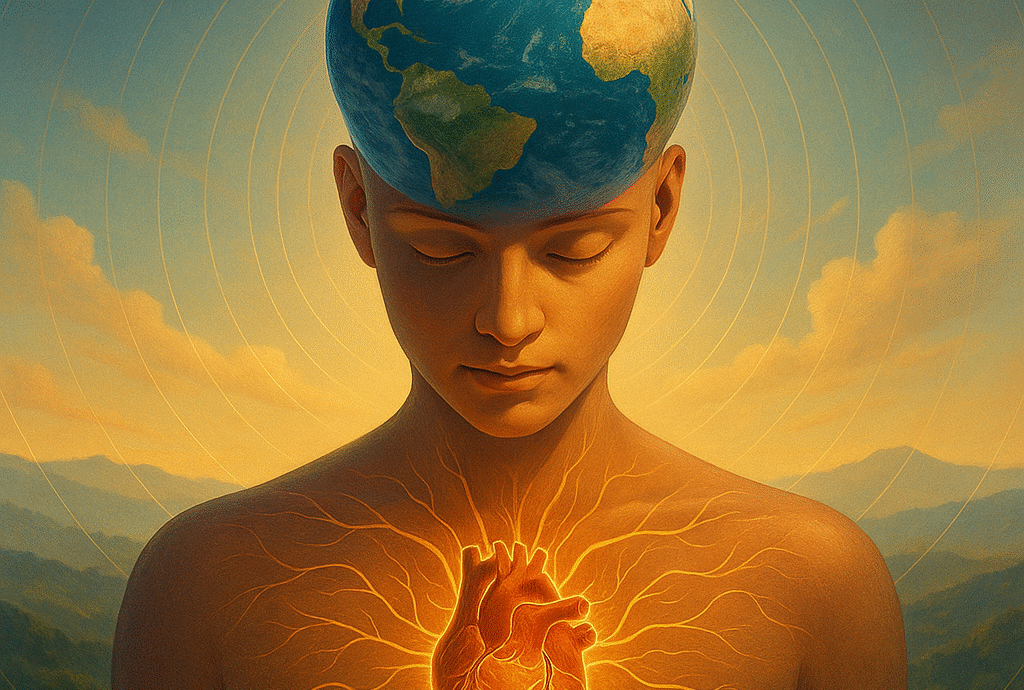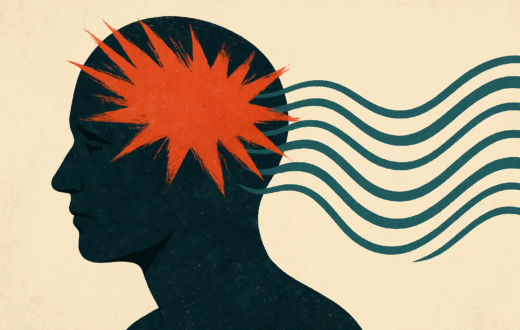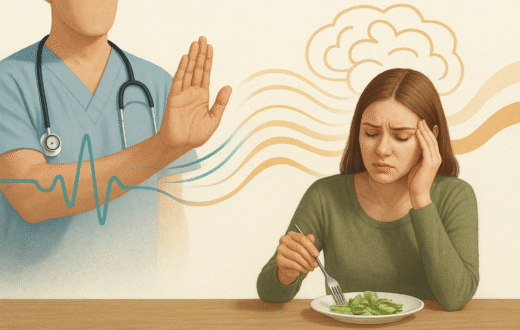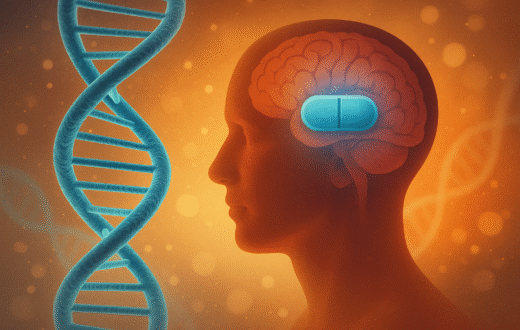The World Begins Within Our Body

An ancient tension lives between subjectivity and objectivity—between the world as we feel it and the world as it exists. This dialogue begins within the body, the living threshold between the inner and the outer. The body is not a shell enclosing the mind but a sensitive membrane where thought and matter meet, where the external world gains meaning only when it touches our inner being.
The inner realm does not appear through abstraction but through interoception — the lived sense of breathing, pulsing, and tension. Every heartbeat translates our worldview, not as an idea but as a felt meaning. When the body feels safe, the world unfolds as a landscape of possibilities. When the body suffers, the world collapses into a tunnel of endurance. Our physiology continuously paints the world’s horizon. Psychology that understands this becomes aesthetic, seeing humans as artists of their perception.
The only world we ever truly know is the one that begins inside our bodies.
It exists in the breath, the senses, and the quiet rhythm of the heart. Inside and outside are not opposites but relational positions in an endless cycle. Perception is not a window but a conversation — a dance between skin and horizon. Every sense is an opening, every memory a vibration. The boundaries between inner and outer dissolve in a living network of resonances.
The Illusion of an Outside World
Before the eyes see or the ears hear, the body regulates. Interoception precedes exteroception. The world reflects our inner rhythm; perception mirrors physiological harmony. Before thought interprets, the body already feels. Interoception is our first world — a realm of sensations before meaning.
Our skin is a field of receptors, our cells tiny oscillating gates. Every ion channel opens and closes in rhythmic exchange, creating a living ocean of perception. To perceive is to participate in this molecular symphony of inner and outer worlds.
This opens a new dimension: a phenomenology of well-being grounded in cellular rhythms, fluid motion, and the mutual tuning of systems. The world enters not through concepts but through resonance — the vibration of matter meeting consciousness.
The Body as the First World
In a universe of cycles where nothing stands still, the line between inside and outside is not drawn — it breathes. What we call “outside” is the point where the senses converge and memory begins to echo; what we call “inside” is the field where that echo finds form. The body is not a vessel for the mind but a source of knowing.
On the macro level, the body opens to light, air, and nourishment. On the micro level, it lives in molecular dialogue with its surroundings. Phenomenologically, it vibrates as a continuum of inner attunement. Well-being is rhythmic harmony, not static calm.
Perception is the echo of bodily regulation; the senses are the extensions of a harmonizing organism. Memory is the body’s resonance in time. Emotion colors perception like a filter — fear contracts the world, calm expands it.
The slope of a mountain, the chill of winter, the gaze of a child — these moments silence our intellect and invite us to feel rather than explain. Mental well-being is born not from avoidance but from attunement to this invitation.
Living intelligence arises where the world reshapes our rhythm.
Practical Meaning
For therapy, this means less analysis, more alignment. For education, it means embodied learning — rhythm, breath, and ecological awareness. The world is not a backdrop but a partner in resonance. Well-being is not balance within but harmony between body and world.
Breathing reminds us: there is no inside without an outside. Seeing reminds us: perception transforms the perceiver. Thinking itself is a metabolism, a circulation of meaning.
Boundaries do not lie in things but in movement. The inside gathers experience; the outside releases it. Between the two vibrates consciousness—the living thread connecting body and world. To say that the world begins in the body is to remember that every act of knowing is embodied, rhythmic, and relational. We live through our physical poetry. The world speaks through our breath.





